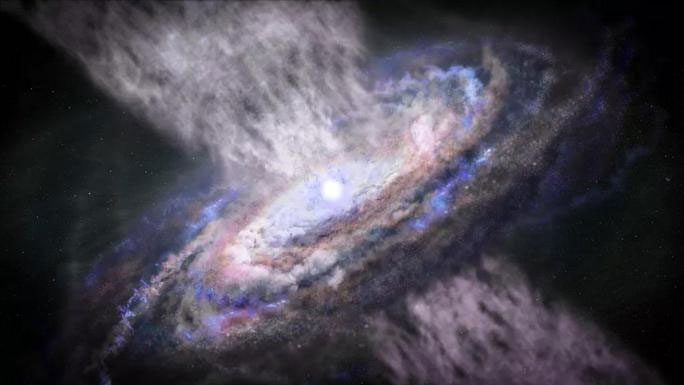Scientists have recently identified a new and extremely frightening behavior exhibited by supermassive black holes, which could potentially destroy worlds like Earth right from their inception.
According to Space, the research titled “Reverse Time – Space”, led by Dr. Kei Ito from SOKENDAI (Graduate University for Advanced Studies – Japan), sifted through data from the archives of the Cosmic Evolution Survey (COSMOS) to explore the worlds of primordial galaxies.
COSMOS is a vast data repository created from observations of distant regions of the universe using a series of the most powerful telescopes, such as the Subaru Telescope located in Hawaii, the Very Large Array in New Mexico, NASA’s Hubble Space Telescope, and the X-ray Telescope XMM-Newton from the European Space Agency (ESA).

Supermassive black holes have the power to destroy their host galaxies by heating or ejecting molecular clouds, which contain the “seeds” of stars and planets – (Photo: STScI)
The research team observed galaxies that existed between 9.5 billion to 12.5 billion years ago. This phenomenon of “observing the past” is due to these galaxies being so distant—9.5 to 12.5 billion light-years away—that it takes this much time for their light to reach our telescopes.
They also searched for X-ray and radio signals from active black holes.
A frightening discovery was made. According to a publication in The Astrophysical Journal, some supermassive black holes—located at the centers of galaxies—are not fulfilling their role as the heart of those galaxies but are instead destroying them.
Rather than undergoing massive star formation processes, from which stars would give rise to planets… as the Sun and Earth did in the Milky Way, in these unfortunate galaxies, everything has been “stillborn.”
The black holes do not actually “devour” the seeds of stars or planets but extinguish their formation right from the start.
Stars form when cold hydrogen molecular clouds collapse, fragment, and condense. In these unfortunate galaxies, their supermassive black holes emit radiation so intense from the surrounding swirling material that it heats the molecular clouds, preventing them from collapsing and condensing to form stars, and even blows these gas clouds out of the galaxy.
Such galaxies become a type of “red galaxy,” with a meager number of remaining stars, existing for a long time but cold and lifeless.
Most unfortunate galaxies are extremely large elliptical galaxies, one of the oldest types of galaxies in the universe.
Like all galaxies, our spiral galaxy, the Milky Way, also hosts a supermassive black hole named Sagittarius A*. Fortunately, despite its immense power and aggression, it has evolved like the majority, allowing the Milky Way to maintain a robust star formation process, keeping the “seeds” of Earth safe instead of being blown away into interstellar space.
Sagittarius A* is currently “hibernating,” although it occasionally wakes up and consumes unfortunate objects that venture too close.





















































